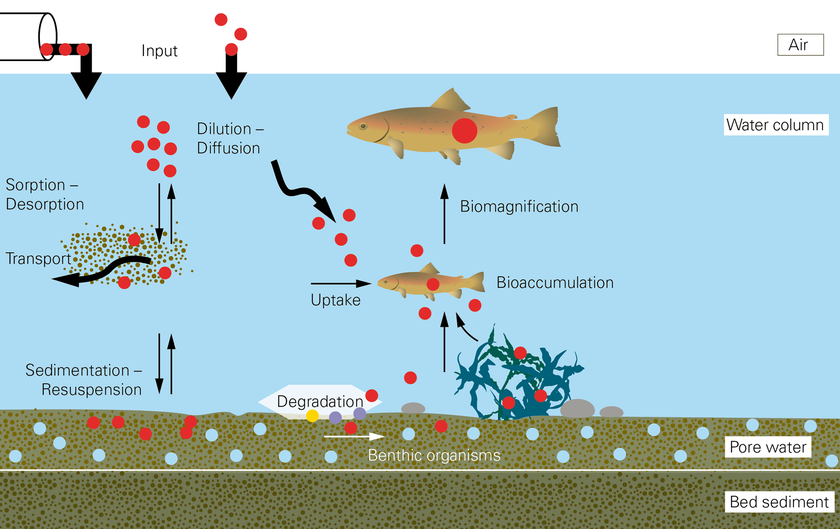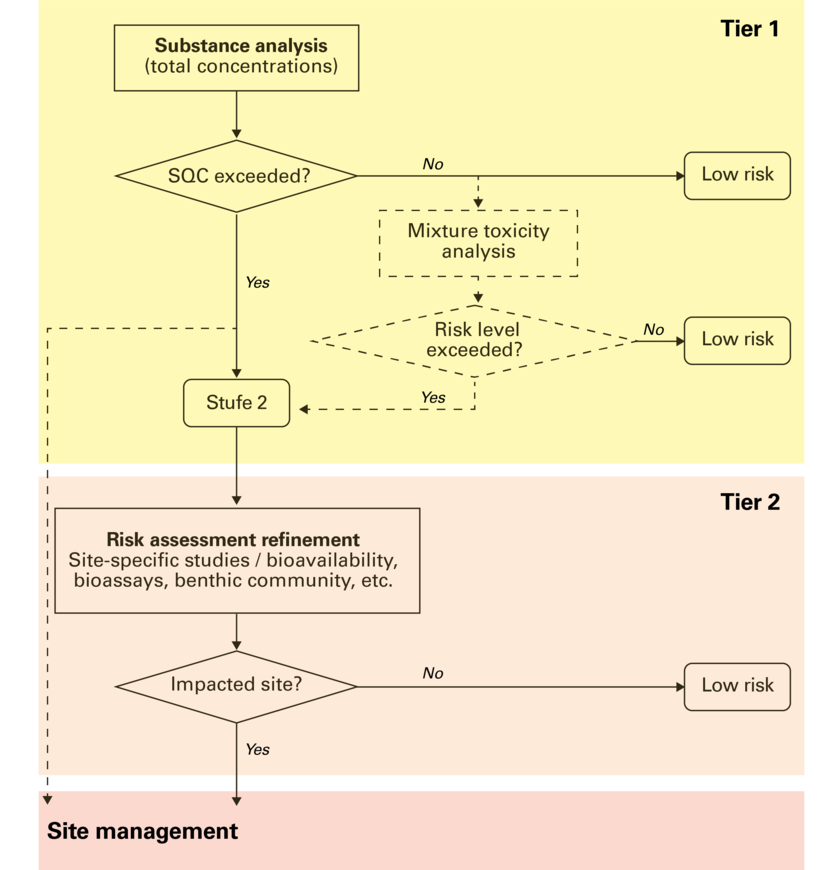Monitoring pollutants in sediments

Article from the Info Day Magazine 2022
A new strategy developed by the Ecotox Centre shows how sediment quality can be assessed uniformly in Switzerland and thus lays the foundation for nationwide monitoring. The process is currently being tested in the canton of Bern.
Sediments play a key role in various processes of aquatic ecosystems. They create new habitats for specialised organisms such as pioneer plants and serve as spawning grounds or habitats for aquatic organisms. In addition, they determine important functions of water catchment areas, such as the flow properties, the shape of the riverbed and the connectivity of habitats in and along the watercourses.
However, sediments are also sinks, i.e. substances that endanger aquatic organisms accumulate in them. Such pollutants enter water ecosystems from various sources such as agriculture, settlements, railway lines or roads. As a result, the sediments are polluted with different types of substances, such as pesticides, mercury or polychlorinated biphenyls (PCBs). However, little is known about the exact extent of sediment pollution and how it has developed in recent years, since to date there is no standardised monitoring of sediment quality in Switzerland. There is also a lack of understanding of the processes: how pollutants enter water bodies, bind to sediments and how they affect aquatic organisms is only partially understood. This is because these processes are very complex and sometimes take place concurrently (see figure).
The persistence and effects of chemicals in sediments are difficult to assess because various processes are involved, some of which occur concurrently. The graphics describe the conceptual model of contamination in the sediment and in the food chain. Biomagnification: Increased concentration of a pollutant in organisms via the food chain. Bioaccumulation: Accumulation of a pollutant in a particular organism through food intake or from the environment. Benthic organisms: Organisms that live in or on sediments.
(Graphic: Oekotoxzentrum / Peter Penicka, Eawag)
A monitoring strategy for Switzerland
The Swiss Centre for Applied Ecotoxicology (Ecotox Centre) published a sediment quality assessment strategy for Switzerland for the first time in 2021. The strategy describes the methodological procedure for sampling and sample pretreatment and proposes quality criteria for 20 prioritised pollutants and pollutant groups as well as an assessment system. Based on the available knowledge about individual pollutants, a multi-stage procedure is proposed to assess the risk of a site containing sediments harmful to aquatic organisms. The strategy builds on methods already in use by the cantons and is compatible with the Module Step Concept (MSC). The MSC is a collection of methods for surveying and assessing watercourses in accordance with the Water Protection Act.
The strategy also explains the pretreatment of sediment samples for chemical analysis.
(Photo: Oekotoxzentrum)
The strategy is thus a first step towards nationwide monitoring. Rico Ryser, Head of Environmental Analysis at the Canton of Bern’s Office of Water and Waste, is currently testing the guide for the first time in the River Aare: “Up to now, we have only been able to examine the heavy metal content in the sediments in the Aare, but thanks to the strategy we can now make a more in-depth assessment of the sediment quality. We have collected the sediment samples and are currently carrying out the ecotoxicological tests and investigations of organic pollutants in collaboration with the Ecotox Centre and the University of Bern. Now we are looking forward to the results.” The publication of all data from the Aare project (including macrozoobenthos and ecotoxicity tests) is planned for spring 2023.
Created by Manuela di Giulio for Info Day Magazine 2022



